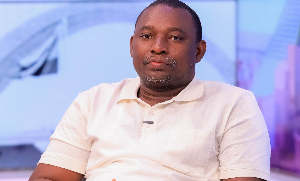---A WAKE UP FOR GHANAIANS
By Seth K Addi
Ghana is among the few countries in Africa that have taken affirmative action in favour of marginalised groups at a higher level with a focus on persons with disabilities. These efforts have resulted in laws and policies promoting equality, inclusion and participation of persons with disabilities in society.
The Government of the Republic of Ghana back in 1996 developed the National Disability Policy leading to the passage on the National Disability Law, Act 715 of 2006 aims at promoting equal opportunities, enhance, empower and seek the protection of the rights of persons with disabilities irrespective of gender, age, or type of disability.
However, advocacy, implementation and supervision of disability programmes are severely lacking. Accessibility is one of the key elements addressed in these policies and laws. Due to limited enforcement of disability laws, absence of National Accessibility Standards and lack of knowledge about the rights of persons with disabilities, laws and policies on accessibility have been largely overlooked.
What is accessibility?
Accessibility entails understanding its relation to areas of life beyond just the physical environment.
Areas that are often overlooked are access to services, information and communication which are an integral part of making a barrier-free society and address the accessibility needs of persons with sensory, intellectual and psychosocial disabilities as well. These aspects should be addressed in a set of complementary Standards.
The environment in Ghana is not barrier-free. It does not allow easy and safe movement, function or access for all, regardless of age, sex or condition. Access by all to physical space and to services is not possible without obstacles, which leads to loss of dignity and independence.
This is in recognition that persons with disabilities can live to their full potential given the same conditions and opportunities. The national disability policy and Act 715 and the 1992republican Constitution and other legal legislations also provide for accessibility not only for persons with disabilities but also for elderly persons, the sick, pregnant women, and those carrying heavy loads.
Despite the efforts of the government to establish a conducive environment for participation of
Persons with disabilities in all spheres of life, there is still difficulties in terms of accessing the physical infrastructure as most buildings do not have facilities such as ramps, lifts, and so on.
Some of the existing accessibility facilities are not designed according to the required Standards and as a result, persons with disabilities continue to face difficulties in accessing them. Leading to discrimination, violation of the rights of persons with disability and deliberately putting impediment to the disabled to exhibit their full potential to contribute to the development of Ghana and Africa.
People affected by accessibility barriers:
People who use wheelchairs, people with limited walking/movement abilities, People with visual impairment or low vision, People with hearing impairment, People with intellectual disabilities, People with psychosocial disabilities, Elderly persons, Pregnant women and People with temporary disabilities
The need for Accessibility Standards
To the best of my knowledge one of the cardinal reasons why it has been very difficult to implement the legal provisions on accessibility is the absence of Accessibility Standards to guide architects, property developers, policy makers and implementers on the accessibility requirements in the physical environment during the design and implementation of construction projects.
The goal of the Accessibility Standards is to contribute to improving equal access for persons with disabilities, in order to enable them to live independently and participate fully in all aspects of life.
• To provide a blueprint for creating an accessible physical environment.
• To provide a tool for measurement and auditing of accessibility of the environment.
The Standards are intended for use by a variety of stakeholders, including those that:
• Develop laws, policies and regulations e.g Parliament and line ministries.
• Build and implement changes in the physical environment such as architects, contractors, engineers and those who own or operate public infrastructure or services like the banks, churches and other service providers.
ACCESSIBILITY FOR PERSONS WITH DIFFERENT DISABILITIES
The principal targets for these Standards are people with different disabilities. In order to harmonize between the accessibility needs of different groups, there is need to have a proper understanding of these needs which differ from one disability to another.
People who use wheelchairs
Many accessibility requirements relate to dimensions and other aspects of wheelchairs. In order to achieve a complete turn with the wheelchair, it is necessary to provide an unobstructed circle with a minimum diameter of 1.50m.
Considerable energy is required to propel a wheelchair manually up ramps, over changes in level and over soft or uneven surfaces. Therefore the Standards address those aspects in particular.
Resistance between the floor and the wheelchair wheels depends on the floor surface of the pathway - whether it is even or uneven, firm or loose. Changes in level should be avoided and the floor surface should be hard, even and slip resistant.
People with movement difficulties may use crutches or sticks.
Special attention must be paid to avoid broken, rough or sloping floor surface and surfaces that become particularly slippery after rainfall, such as wood covering, granite, hard burnt bricks, gravel and Murom.
The following aspects are important to enable independent movement for people using wheelchairs and other assistive devices:
• Changes in level should be avoided.
• Floor surfaces should be hard, even and slip resistant.
• Rails should be provided on stairs and ramps.
• Ramps should have resting places and be of low slope along travel routes.
• Pathways should be of limited slope and include sufficient turning radius.
• Doors should be light and easy to turn, and entrances should be sufficiently wide.
• Parking space should be close to the main entrance.
• Furniture, counters, equipment, power sockets, and plugs should be placed at suitable heights reachable by persons who use wheelchairs.
• Handrails should be easy to grasp.
Persons with visual impairments
For blind persons and persons with visual impairments, orientation can be eased by the use of contrasting colours and changes in the texture of the floor material. This helps a blind person in identifying doors, stairs, steps, ramps and pedestrian crossings.
The path of travel should be easy to detect by a blind person using a long white cane. A guide strip with a contrasting floor texture running parallel to main pathway should be used for this purpose.
The use of protruding elements and low overhanging signs should be avoided in pathways.
Visual capability is different from one person to another and changes with age and disability.
Lighting systems should be made to suit different needs a In order to provide a barrier-free environment for blind persons and persons with visual impairment, the physical surroundings should be arranged in a simple and logical way.
Visual information should be accompanied by audible information, handrails should be available to grip when using stairs, and ramps, entrances, stairs, and information boards should be well lighted.
Blind persons are aided by tactile and auditory information. Therefore, written information should be made available in braille and visual information should be accompanied by audible information.
Persons with hearing impairments
People with hearing impairments may experience difficulty in distinguishing words and sounds in noisy environments. Therefore, rooms should be acoustically insulated.
Supplementary visual information should be provided for deaf persons and persons with hearing impairments, such as visual information at airports and bus stations, and alarms and bells in lifts.
People with learning or intellectual disabilities
Some people with learning or intellectual disabilities experience difficulties in understanding or interpreting information like signs, and in distinguishing between different colours or between left or right.
The following design elements will enable people experiencing these difficulties to physically access the built environment: simple design with clear and unambiguous sign postings; use of signs and notice boards with pictures and symbols; and separation of a mass of information into a number of signs that can be more easily read and understood than in one sign.
Other Groups
In addition to enabling access to persons with disabilities, the Standards also ensure access to other groups, such as elderly persons, pregnant women, people and children with temporary disabilities, and people carrying heavy or cumbersome luggage. In short, accessibility benefits all persons and the Standards ensure a barrier-free environment for all people include the possibility of adjustments from low to strong light.
Winding staircases, vertical turning doors and side-hung doors should equally be avoided.
Conclusion
Despite the efforts of the government, Ghana Federation of the Disabled and its partner, the network of journalist for the promotion of the Rights of persons with Disability in Africa (PROMOAFRICA) and other OPWDs to establish a conducive environment for participation of persons with disabilities in all spheres of life, they still face difficulties in terms of accessing the physical infrastructure.
Most buildings do not have facilities such as ramps, lifts, and so on. Some of the existing accessibility facilities are not designed according to the required Standards and as a result, persons with disabilities continue to face difficulties in accessing them. The responsibility lies on us as citizen to help build a better environment all persons living in the land of gold call Ghana.
The author is the president of the network of Journalists for the Promotion of the Rights of Persons with Disability in Africa (PROMOAFRICA) and the managing editor of the EVENING TRIBUNE newspaper.
Email.promoafrica@gmail.com tel.233 267457253
Opinions of Sunday, 20 February 2011
Columnist: Addi, Seth K
Building Barrier-Free Environment For The Disabled
Entertainment













